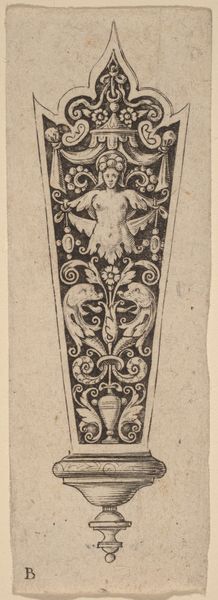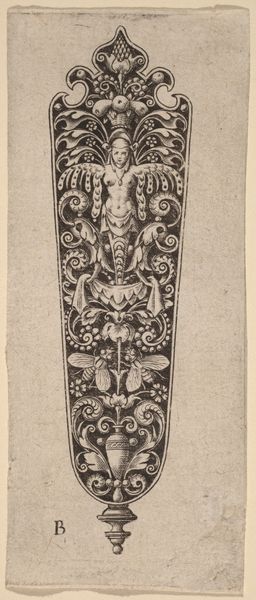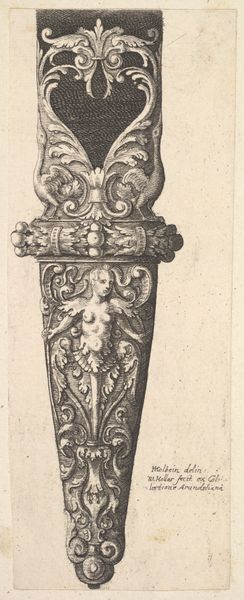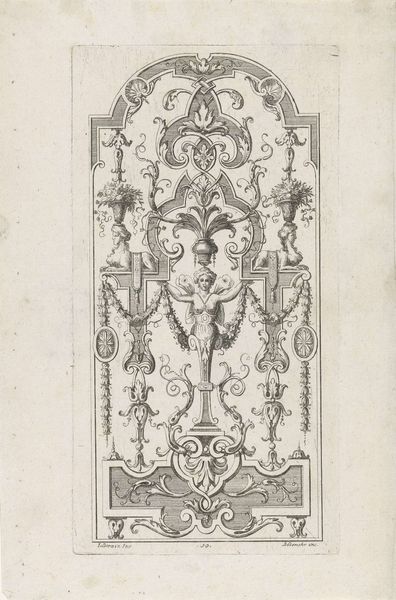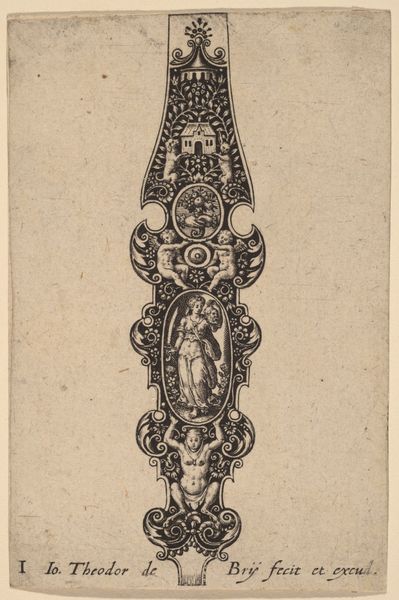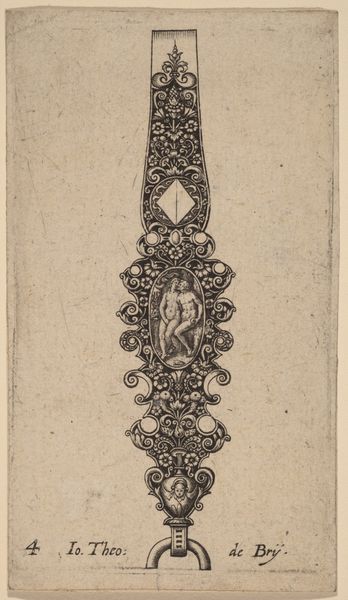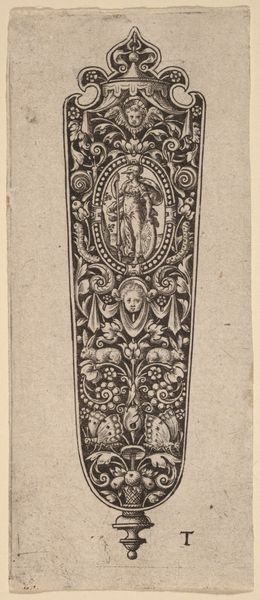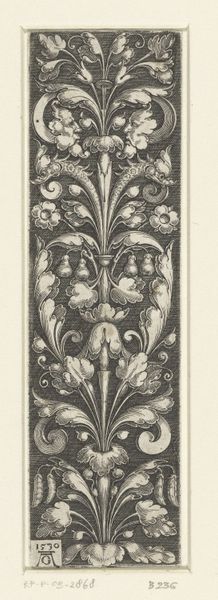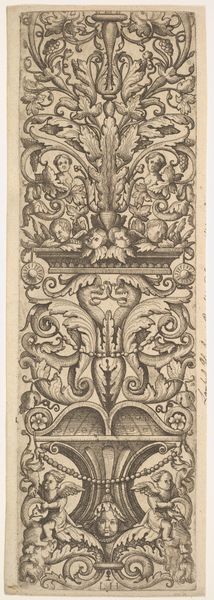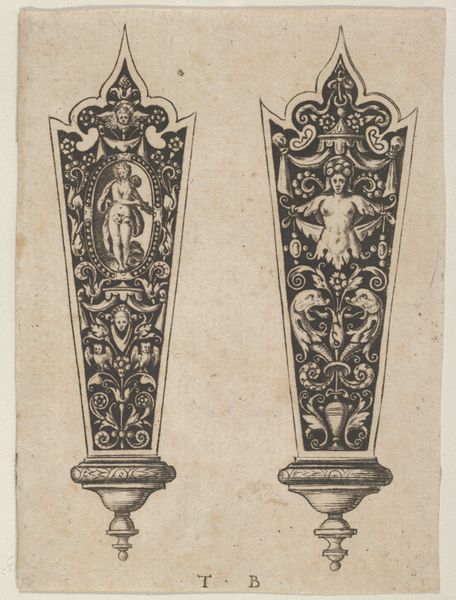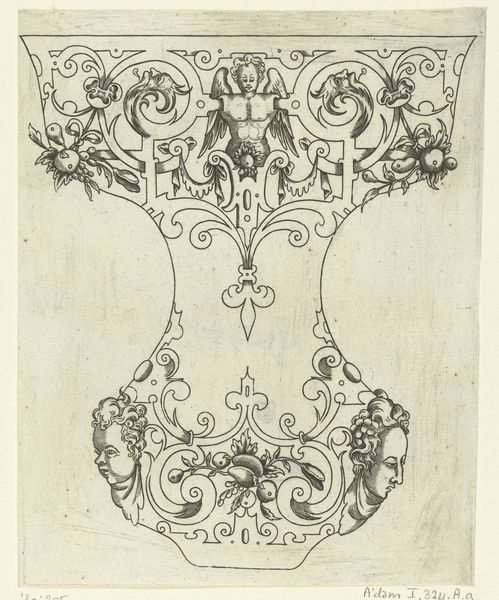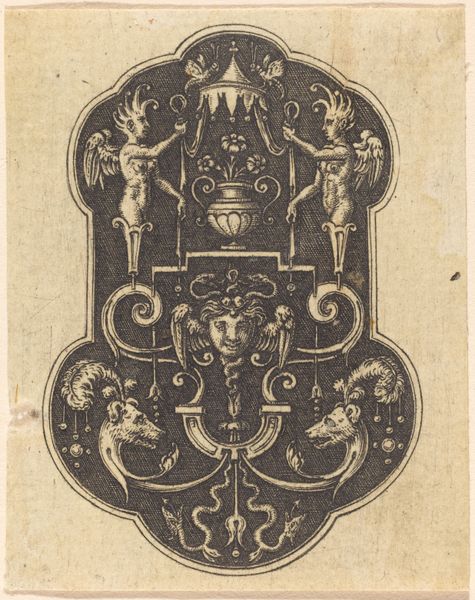
print, engraving
# print
#
mannerism
#
figuration
#
form
#
history-painting
#
decorative-art
#
engraving
Copyright: National Gallery of Art: CC0 1.0
Curator: Here we have Theodor de Bry’s engraving, "Ornament for Knife Handle." It’s an incredible example of Mannerist design. Editor: My first thought? Elegance with a slightly dangerous edge, if you’ll pardon the pun! There's something about the intricate detail paired with that weapon-esque form that just sings of refined power. Curator: Absolutely. De Bry was a master of detail, wasn’t he? Looking closely, you’ll see how the ornamentation is more than decorative. It blends classical figures with ornate foliate designs, showcasing the high style of the period. The engraving process, allows such fine detailing! Editor: I'm curious, with "knife handles" seemingly a functional tool, why this intense visual crafting? Was the aim of de Bry to aestheticize violence itself? Curator: Interesting question, in this context, the engraving transcends mere functionality. During the Mannerist period, luxury goods played a key role in expressing one's status and refined sensibility. It was less about function and more about communicating sophisticated taste, artistic prowess, and perhaps a certain worldliness and control. It's not that violence itself was "aestheticized" so to speak, but rather how such objects were signifiers within specific courtly environments. Editor: Right, it’s aspirational weaponry, or at least its ornamental image. A delicate power-move in printed form. Do you feel that engravings such as these are able to reflect political climates? Curator: I think they definitely participate in constructing certain socio-political ideas. This particular engraving reflects a world fascinated by classicism, skill and sophistication. So even the simplest daily activity - slicing an apple, maybe- becomes part of the same aestheticized theater! Editor: True, so everything transforms into a show! It really does put today’s 'self-curation' through Instagram into historical context. Curator: Precisely. It shows us that what we see as "new" forms of expression or identity play are really part of longer histories, still, I see the print speaking a visual language of authority, aspiration, and a certain cultural dominance. Editor: It makes me want to see what the actual knife would have looked like! Curator: Doesn’t it? This exploration of beauty within the functional reveals some of humanity’s fascinating obsessions!
Comments
No comments
Be the first to comment and join the conversation on the ultimate creative platform.
